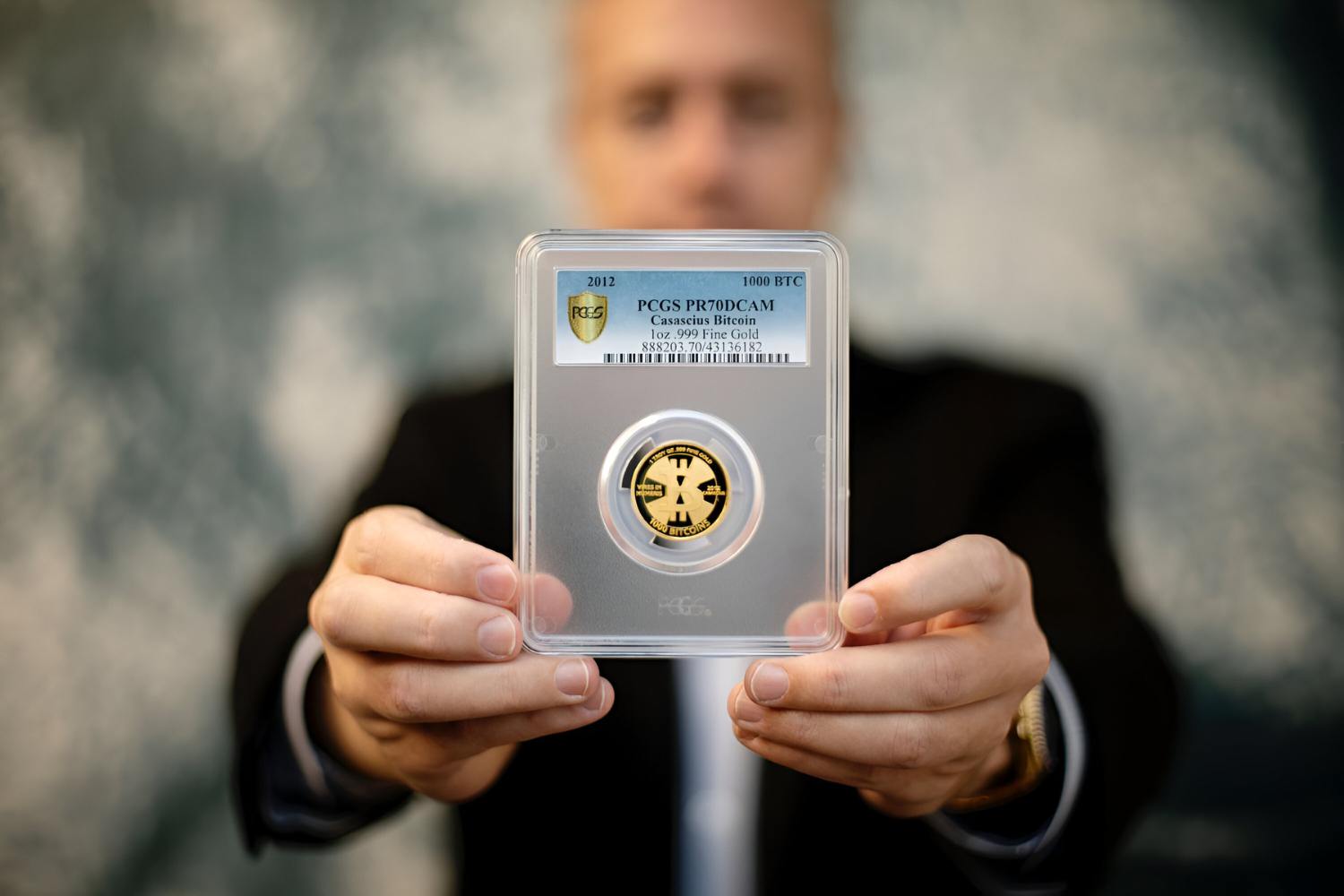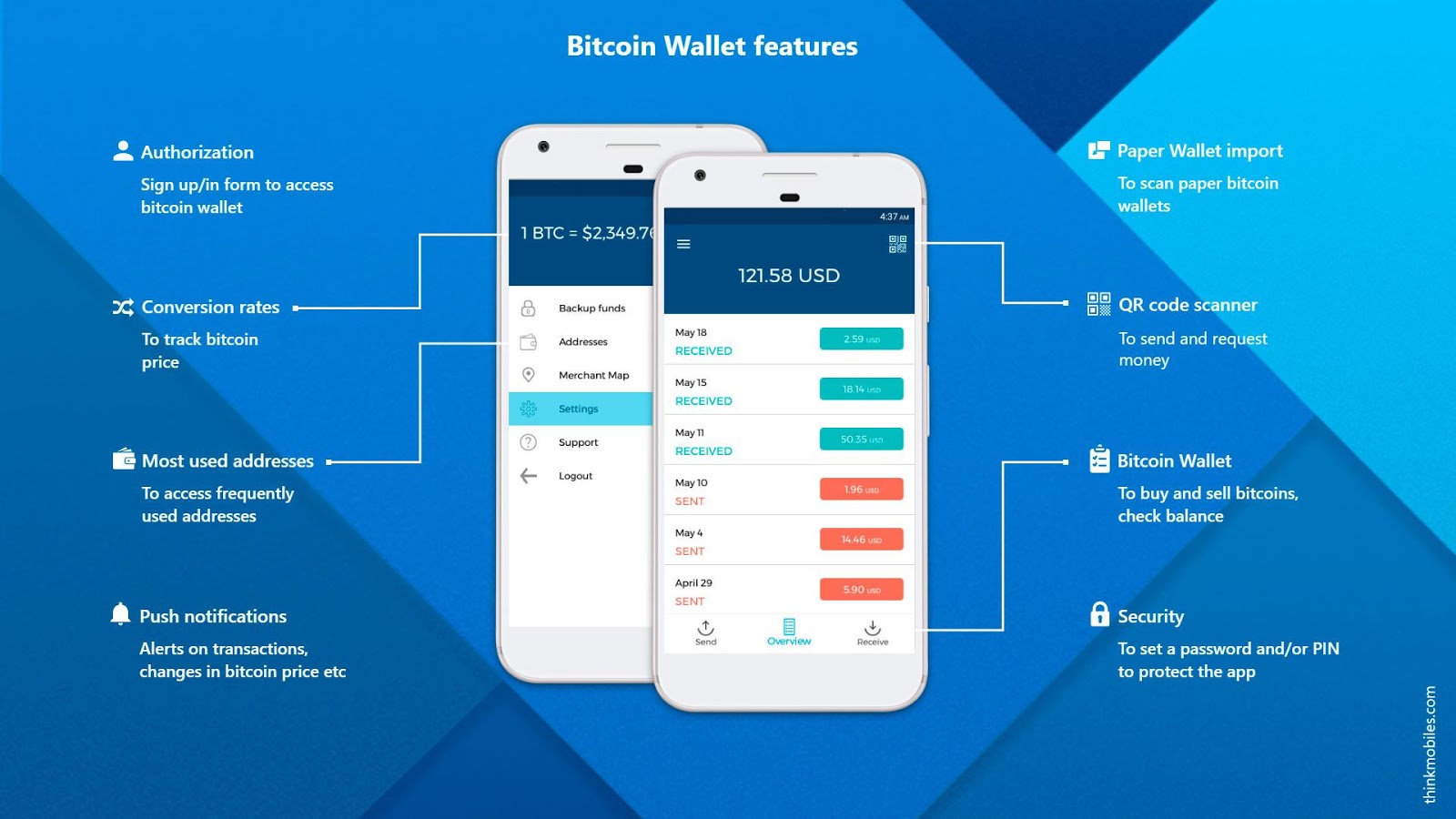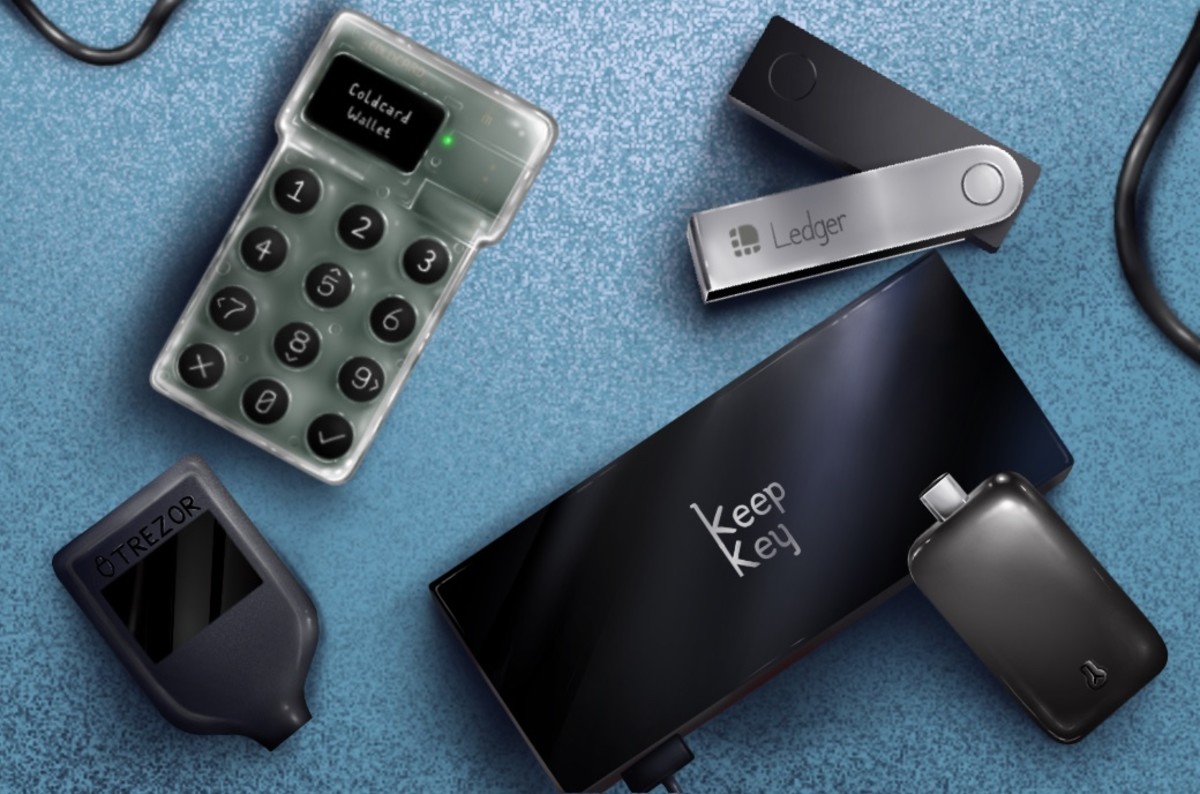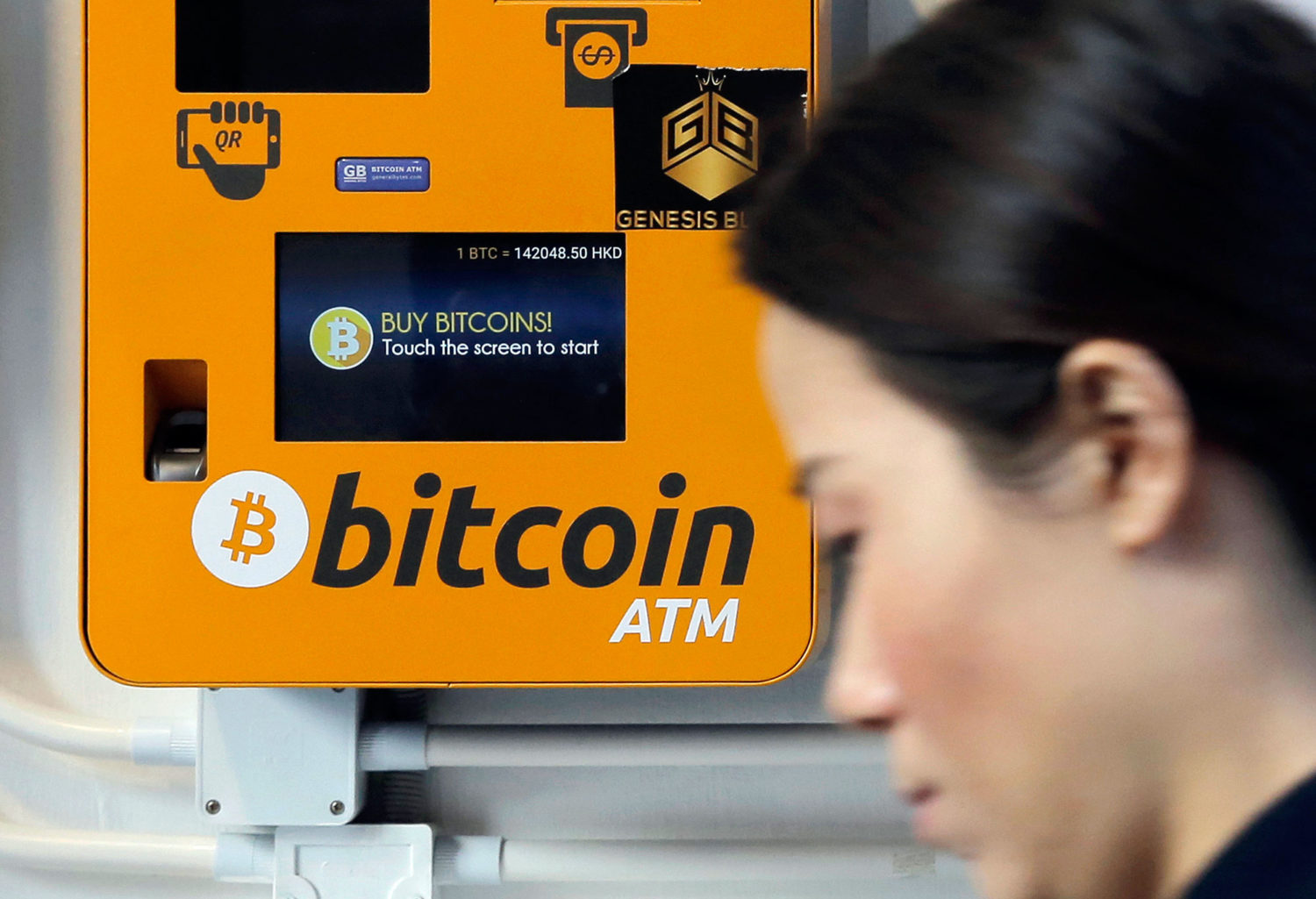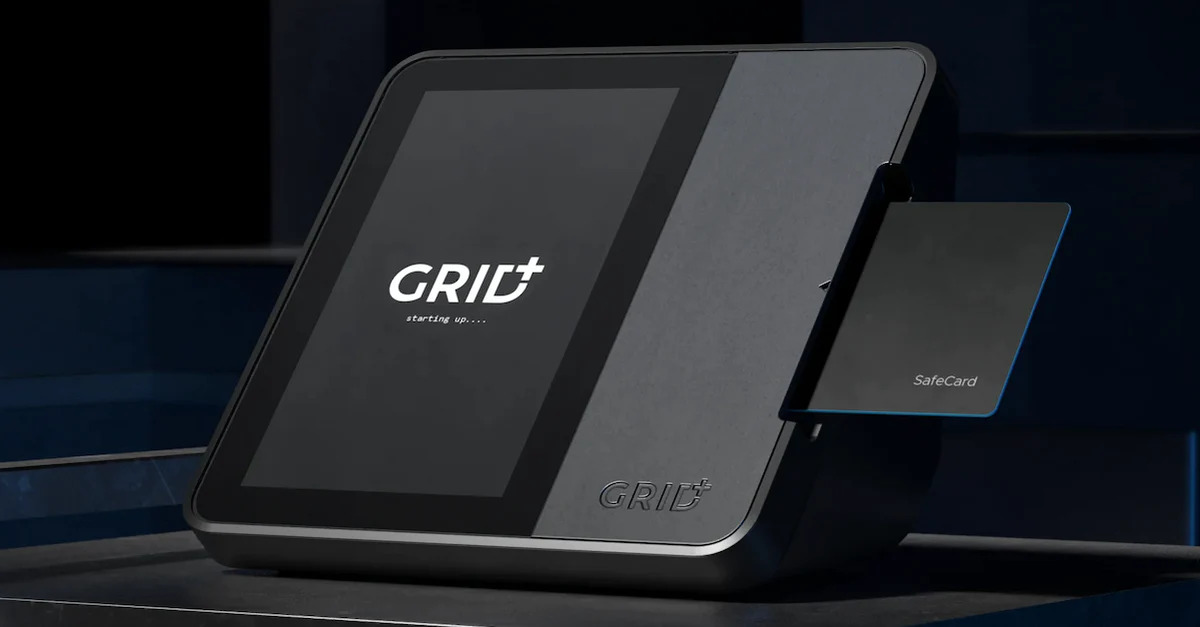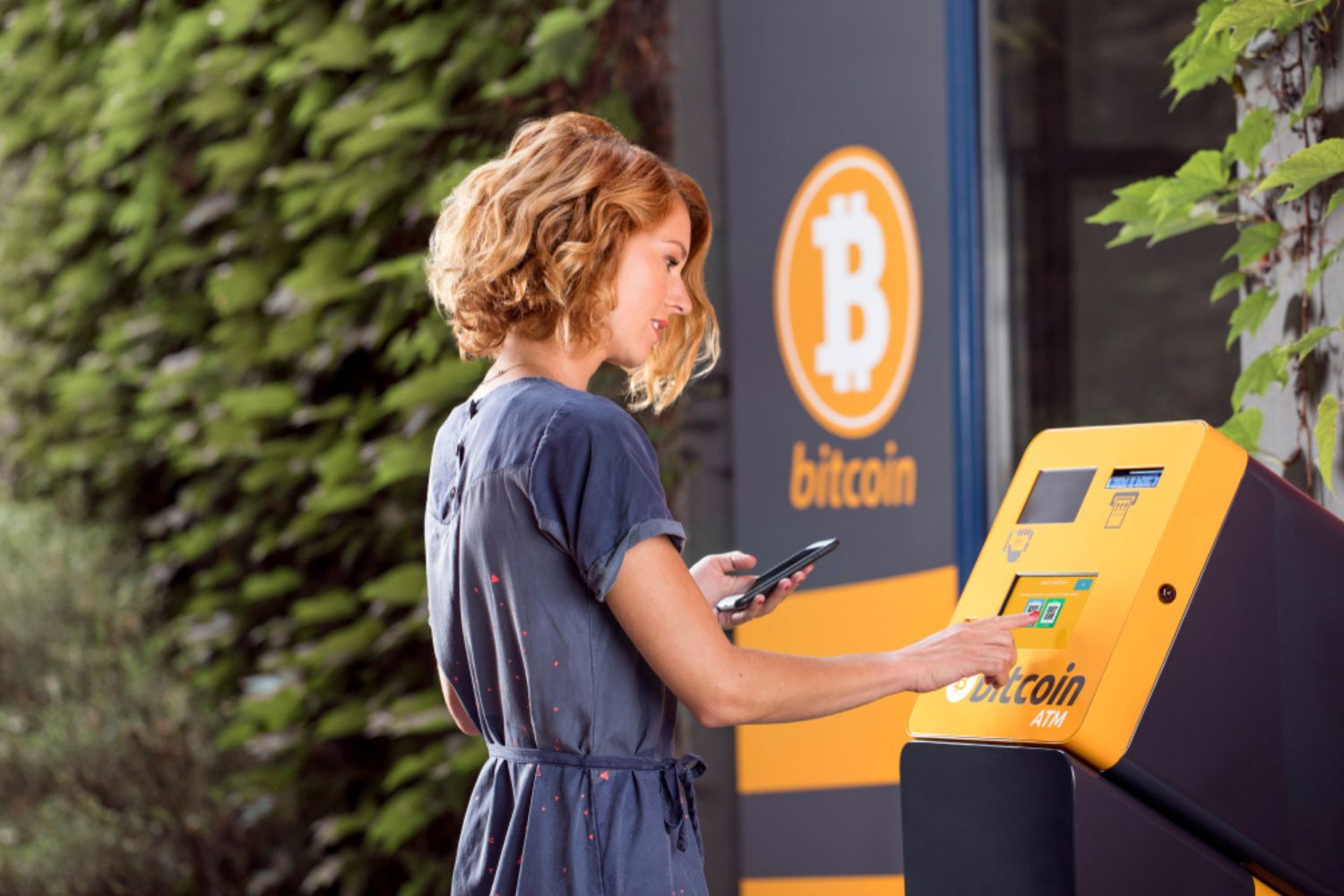Introduction
Welcome to the world of physical bitcoins! While most people are familiar with digital currencies like Bitcoin that exist solely online, physical bitcoins offer a tangible and collectible representation of this revolutionary form of money. In this article, we will explore what physical bitcoins are, their history, how they are made, the materials used, their security features, collecting them as a hobby, popular designs, and even investing in them for potential financial gains.
Physical bitcoins, as the name suggests, are real, physical objects that represent the digital currency Bitcoin. They come in various shapes, sizes, and materials, capturing the essence of the innovative technology behind cryptocurrencies. Holding a physical bitcoin in your hand allows you to experience the concept of digital money in a physical form, bridging the gap between the virtual and physical realms.
The concept of physical bitcoins originated as a way to promote and popularize the use of Bitcoin. They serve both as a practical means of storing the digital currency offline, away from potential online threats, and as a collector’s item, appealing to enthusiasts and investors alike.
Over the years, physical bitcoins have gained a cult-like following, with a rich history and a vibrant community of collectors. The designs range from intricate metallic coins to plastic cards with embedded chips. Some physical bitcoin manufacturers even incorporate security features to prevent counterfeiting and ensure the authenticity of each coin.
Collecting physical bitcoins can be a fascinating and rewarding hobby. Many collectors appreciate the craftsmanship, the unique designs, and the historical significance of these objects. Just like stamp or coin collecting, physical bitcoin collecting offers a chance to explore and appreciate the evolving world of cryptocurrencies.
Investing in physical bitcoins can also be an intriguing option for those looking to diversify their investment portfolios. Some collectors have witnessed considerable increases in the value of rare and limited edition physical bitcoins over time. However, as with any investment, it is essential to conduct thorough research and exercise caution.
In the following sections, we will delve deeper into the fascinating world of physical bitcoins, exploring their history, production process, various materials used, and security features. Whether you are a curious individual interested in learning more about this unique form of currency or an avid collector looking to expand your knowledge, this article will serve as a comprehensive guide to all things physical bitcoins.
What is a physical bitcoin?
A physical bitcoin is a tangible representation of the digital currency Bitcoin. It is a physical object that holds value just like traditional coins and banknotes. Essentially, it is a physical manifestation of the concept of digital money.
While Bitcoin primarily exists as a decentralized and digital currency, physical bitcoins provide a way to bridge the gap between the virtual and physical worlds. They offer a unique way for individuals to interact with and experience the concept of cryptocurrencies.
Each physical bitcoin consists of a private key, which is essentially a unique alphanumeric code. This private key is securely embedded or printed on the physical object, making it a valuable and tangible asset. This private key grants the owner access to the specific amount of digital currency associated with that physical bitcoin.
Physical bitcoins serve two main purposes. First, they provide an offline storage option for Bitcoin holders, also known as cold storage. By storing Bitcoin on a physical object, users can protect their digital assets from online threats, such as hacking and cyberattacks. It adds an extra layer of security to their digital wealth.
Secondly, physical bitcoins act as collector’s items. They hold intrinsic value beyond their digital counterpart, appealing to enthusiasts and collectors. The uniqueness in design, limited editions, and the historical significance of certain physical bitcoins contribute to their appeal in the collector’s market.
It is important to note that physical bitcoins do not actually contain the digital currency within them, but rather serve as a representation or proof of ownership. The actual Bitcoin balance associated with the physical bitcoin exists on the blockchain, the decentralized ledger that records all Bitcoin transactions.
However, the ability to physically hold and possess a representation of the cryptocurrency adds a tangible element to the ownership of Bitcoin. It allows enthusiasts to showcase their support for the technology and adds a sense of novelty to the cryptocurrency space.
The next section will provide a deeper dive into the history of physical bitcoins, exploring how they came into existence and evolved over time.
The history of physical bitcoins
The history of physical bitcoins traces back to the early days of Bitcoin itself. It began as a way to promote and raise awareness about digital currencies, but it quickly evolved into a niche market of its own.
The first physical bitcoins were introduced in 2011 by Mike Caldwell, also known as Casascius. Caldwell produced physical coins with embedded private keys, each representing a specific amount of Bitcoin. These coins gained popularity among early Bitcoin adopters who wanted a practical and secure way to store their digital wealth.
Caldwell’s physical bitcoins quickly became collector’s items due to their limited supply and unique designs. Each coin had a holographic tamper-evident seal, preventing anyone from tampering with the private key without breaking the seal. The appeal of these physical coins extended beyond their utilitarian purpose, and collectors started viewing them as scarce and valuable tokens.
Following Casascius’ success, other individuals and companies joined the physical bitcoin market. Various designs and materials were introduced, expanding the options for collectors and enthusiasts. Coins made from precious metals like gold and silver proved to be particularly popular, appealing to both Bitcoin enthusiasts and precious metal collectors.
Over time, the physical bitcoin market continued to grow, with new companies offering their own unique versions of these collectible coins. Some manufacturers introduced additional security features such as holograms, tamper-proof packaging, and intricate engravings to ensure the authenticity and integrity of their physical bitcoins.
However, the physical bitcoin market experienced setbacks as well. In 2013, the Financial Crimes Enforcement Network (FinCEN) in the United States issued a statement that confirmed physical bitcoins could be classified as money transmitters, subject to regulatory requirements. This added a layer of complexity and regulatory scrutiny to the production and sale of physical bitcoins.
Despite these regulatory challenges, the market for physical bitcoins continued to thrive, and collectors remained enthusiastic about acquiring unique and valuable pieces for their collections. As the popularity of cryptocurrencies grew, so did the market for physical representations of these digital assets.
Today, physical bitcoins remain a niche and sought-after collectible for cryptocurrency enthusiasts and investors. The market has expanded to include a diverse range of designs, materials, and security features, catering to the varied tastes and preferences of collectors.
The next section will delve into the manufacturing process of physical bitcoins, exploring the techniques and materials used to create these fascinating objects.
How are physical bitcoins made?
Creating physical bitcoins involves a combination of technical knowledge, precision craftsmanship, and attention to detail. The process can vary depending on the manufacturer and the specific design, but here is a general overview of how physical bitcoins are made.
The first step in the production of physical bitcoins is to generate the private keys associated with each coin. These private keys are cryptographic codes that grant access to a specific amount of Bitcoin. The keys need to be securely generated and kept confidential throughout the manufacturing process.
Once the private keys are generated, they are typically engraved or etched onto the physical object. This can be done using various methods, such as laser engraving, printing, or metal stamping. The choice of method depends on the material and design of the physical bitcoin.
Some physical bitcoins are made from metals like gold, silver, or brass. These coins often undergo a minting process similar to traditional coin minting. The metal is shaped into the desired form using specialized machinery and dies. The private key is then engraved or stamped onto the coin’s surface.
Other physical bitcoins made from materials like plastic or acrylic usually involve a different manufacturing process. These coins are often produced using injection molding or 3D printing techniques. The private keys are integrated into the design or embedded within the material during the manufacturing process.
Regardless of the manufacturing method, security features are often incorporated into physical bitcoins to protect against counterfeiting. This can involve holographic stickers, tamper-evident seals, or unique serial numbers. These security features ensure the authenticity and integrity of the physical bitcoins, providing confidence to collectors and investors.
Once the physical bitcoins are manufactured, they undergo quality control checks to ensure that they meet the required standards. This may include inspecting the engraving or printing quality, verifying the integrity of the security features, and conducting weight or dimension checks.
It is important to note that the private keys embedded in physical bitcoins should be kept confidential. Manufacturers often recommend transferring the digital funds associated with the physical bitcoin to a secure digital wallet, making the physical bitcoin itself a collector’s item or a backup for offline storage.
Manufacturers of physical bitcoins continually innovate and experiment with different materials, designs, and security features. This contributes to the diverse range of physical bitcoins available on the market, offering collectors and enthusiasts a wide variety of options to choose from.
In the next section, we will explore the different materials used to create physical bitcoins and how they impact the aesthetics and durability of these unique collectibles.
Different materials used for physical bitcoins
The design, durability, and overall aesthetic appeal of a physical bitcoin are greatly influenced by the material used in its construction. Manufacturers of physical bitcoins utilize various materials to create these unique and collectible objects. Here are some of the most common materials used:
Metal: Metal, particularly precious metals such as gold, silver, and brass, is a popular choice for creating physical bitcoins. Metal coins offer a luxurious and substantial feel to the collector’s item. The manufacturing process often involves minting the metal into the desired shape, engraving the private key, and adding additional details through techniques like laser engraving or stamping.
Plastic and acrylic: Plastic and acrylic materials are commonly used for creating physical bitcoins that are lightweight and affordable. Injection molding and 3D printing techniques are often employed to shape the plastic or acrylic into the desired form. The private key can be integrated into the design or embedded within the material during the production process.
Paper and cardboard: While less common than metal or plastic, some physical bitcoins are made from paper or cardboard. These objects are typically lightweight and may resemble paper wallets. However, they often incorporate additional security features like holographic seals or tamper-evident designs to protect the private key.
Ceramic and porcelain: Ceramic and porcelain materials offer a unique and artistic touch to physical bitcoins. These materials allow for intricate designs and detailed artwork to be incorporated into the coins. Like other materials, the private key is engraved or etched onto the surface.
It is important to note that the choice of material impacts not only the visual appeal but also the durability and longevity of the physical bitcoin. Metals tend to be more robust and resistant to wear and tear, while plastic and paper may be more susceptible to damage over time.
Additionally, the material used can also affect the value of a physical bitcoin. Gold and silver physical bitcoins, for example, may have inherent value beyond their representation of the digital currency due to the precious metal content.
Manufacturers continuously explore innovative materials and techniques to create physical bitcoins with unique designs and properties. Some companies even offer customizable options, allowing collectors to select their preferred material and design elements for a truly personalized piece.
In the next section, we will explore the security features commonly found in physical bitcoins, ensuring the authenticity and integrity of these collectible items.
Security features of physical bitcoins
Due to the intrinsic value and collectible nature of physical bitcoins, it is crucial to incorporate security features that protect against counterfeiting and ensure the authenticity and integrity of these unique objects. Here are some of the commonly used security features:
Holographic stickers: Holographic stickers are widely utilized to add an extra layer of security to physical bitcoins. These stickers often feature intricate patterns and holographic elements that are difficult to replicate, making it easier to detect counterfeit coins. The holographic stickers are usually placed over the engraved area containing the private key, providing a visible seal of authenticity.
Tamper-evident seals: Tamper-evident seals are an effective way to protect the private key from tampering or unauthorized access. These seals are designed to break or show signs of tampering when somebody attempts to open the physical bitcoin. They provide visual evidence that the coin has been tampered with, ensuring the integrity of the private key and reducing the risk of counterfeit or compromised coins.
Unique serial numbers: Many physical bitcoins feature unique serial numbers engraved or printed on the coin. These serial numbers serve as a form of identification and can be used to verify the authenticity of the physical bitcoin. Collectors and enthusiasts often refer to these serial numbers to track the ownership and provenance of specific coins.
Specialized packaging: Some manufacturers opt for specialized packaging to further enhance the security of their physical bitcoins. This can include sealed blister packs, tamper-proof capsules, or custom-made cases with built-in security features. The packaging serves as an additional barrier to protect the physical bitcoin, preventing unauthorized access and safeguarding against damage during transit or storage.
Anti-counterfeiting measures: Manufacturers employ various anti-counterfeiting techniques to deter counterfeiters from replicating physical bitcoins. These measures may include microprinting, laser-etched security patterns, or unique markings that can only be detected under specific lighting conditions or with specialized tools. These sophisticated security features make it extremely challenging for counterfeiters to reproduce accurate replicas of the physical bitcoins.
It is important to note that while physical bitcoins incorporate these security features, collectors and investors should still exercise caution when acquiring and storing these objects. It is recommended to purchase physical bitcoins from reputable manufacturers or sellers, ensuring the authenticity and quality of the product.
Additionally, individuals must maintain the security of the private key associated with the physical bitcoin. This includes protecting the private key from unauthorized access, storing it in a secure location, and implementing appropriate digital security measures if the physical bitcoin is intended to be used for offline storage.
Physical bitcoins not only serve as a collectible item but also as a representation of the value stored in the associated digital currency. By implementing robust security features, manufacturers ensure the trust and confidence of collectors, while also enhancing the overall appeal and value of these unique objects.
In the next section, we will explore the world of collecting physical bitcoins as a hobby, the allure of rare designs, and the community of enthusiasts surrounding these tangible representations of the digital currency.
Collecting physical bitcoins
Collecting physical bitcoins has become a popular hobby for cryptocurrency enthusiasts and collectors alike. The allure of these tangible representations of the digital currency, combined with their unique designs and limited availability, makes physical bitcoins a sought-after item in the collecting community.
Collecting physical bitcoins offers a unique way to engage with the world of cryptocurrencies and explore their historical significance. Just like stamp or coin collecting, physical bitcoin collecting allows enthusiasts to appreciate the diverse designs, materials, and security features of these unique objects.
One of the exciting aspects of collecting physical bitcoins is the thrill of acquiring rare and limited-edition pieces. Some physical bitcoins are released in limited quantities, making them highly sought after by collectors. Owning a rare design or variant can provide a sense of prestige and exclusivity within the collecting community.
Collectors are drawn to physical bitcoins not only for their aesthetic appeal but also for their potential long-term value appreciation. Over time, some physical bitcoins have seen significant increases in value, especially rare or discontinued designs. For investors, collecting physical bitcoins can be an intriguing option to diversify their investment portfolios while also indulging in a fascinating hobby.
In addition to collecting individual physical bitcoins, some enthusiasts strive to complete sets or themed collections. For example, collectors may focus on acquiring physical bitcoins from specific manufacturers, particular designs, or coins featuring iconic figures or symbols associated with cryptocurrencies.
The collecting community surrounding physical bitcoins is vibrant and passionate. Forums, online communities, and meetups provide opportunities for collectors to connect with others who share their enthusiasm. These platforms allow collectors to share their knowledge, discuss new releases, exchange or sell physical bitcoins, and appreciate the craftsmanship and innovation within the industry.
When collecting physical bitcoins, it is important to ensure the authenticity and provenance of the coins. Researching reputable manufacturers and sellers, checking for secure packaging and trusted security features, and verifying the unique serial numbers can help collectors make informed decisions and avoid counterfeit or compromised coins.
As with any collecting hobby, it is important to establish personal collecting goals and preferences. Some collectors focus on building a comprehensive collection that includes a wide variety of designs and materials, while others may concentrate on specific themes or limited editions. Ultimately, collecting physical bitcoins is an individual journey, allowing enthusiasts to express their passion for cryptocurrencies and enjoy the thrill of acquiring unique and valuable pieces.
In the final section, we will explore some of the popular designs and styles of physical bitcoins, showcasing the creativity and craftsmanship of these captivating collectibles.
Popular physical bitcoin designs
Physical bitcoins come in a wide range of designs, each offering a unique representation of the digital currency Bitcoin. These designs capture the creativity and craftsmanship of manufacturers, making them highly sought after by collectors and enthusiasts. Here are some popular physical bitcoin designs:
Casascius coins: The Casascius coins, created by Mike Caldwell, were among the earliest and most well-known physical bitcoin designs. These coins were made of brass or gold, with the private key embedded under a holographic tamper-evident seal. The design featured the Bitcoin symbol, Casascius logo, and a distinctive laser-etched pattern.
Lealana coins: Lealana coins gained popularity for their unique and intricate designs. These physical bitcoins were produced in various metals, including copper, silver, and gold. Each coin featured a custom design on one side and the Bitcoin logo on the other. Lealana coins were issued in limited editions, making them highly sought after by collectors.
Denarium coins: Denarium coins are known for their stylish and minimalist designs. These physical bitcoins are made of high-quality brass and feature engraved private keys, QR codes, and the Bitcoin logo. Denarium coins come in different denominations, providing collectors with a range of options to choose from.
BTCC Mint coins: BTCC Mint coins are renowned for their exceptional craftsmanship and attention to detail. These physical bitcoins are made from polished silver or gold-plated silver. The design features the BTCC logo, the Bitcoin symbol, and intricate engravings. BTCC Mint coins often come in elegant packaging, adding a touch of luxury to the collector’s item.
Titan Bitcoin: Titan Bitcoin offers a distinctive physical bitcoin design in the shape of a credit card. These titanium cards have the private key printed on the back, protected by a tamper-evident hologram. Titan Bitcoin cards are highly durable and come in different denominations, making them a popular choice for collectors who appreciate a more modern and practical design.
Aside from these specific designs, there are also physical bitcoins that feature iconic figures in the world of cryptocurrencies, such as Satoshi Nakamoto or well-known Bitcoin symbols and motifs. Some manufacturers even offer customizable options, allowing collectors to have their own unique designs or engravings on the physical bitcoins.
When collecting physical bitcoin designs, it is essential to consider factors such as rarity, limited editions, and the overall aesthetic appeal that resonates with personal preferences. Each design holds its own allure, showcasing the creativity and innovation within the physical bitcoin collecting community.
In the final section, we will discuss the potential investment value of physical bitcoins and considerations for those looking to invest in these unique collectibles.
Investing in physical bitcoins
For those interested in diversifying their investment portfolios, physical bitcoins can offer a unique opportunity to combine their passion for cryptocurrencies with the potential for financial gains. However, it is essential to approach investing in physical bitcoins with careful consideration and an understanding of the market dynamics. Here are some key points to consider:
Market trends: Like any investment, understanding market trends and dynamics is crucial. Researching the historical performance of physical bitcoins, tracking market demand, and staying informed about the latest developments in the industry can provide valuable insights for making informed investment decisions.
Rarity and limited editions: Rarity and limited editions can significantly impact the value of physical bitcoins. Coins with low mintages or unique designs tend to be more sought after by collectors, potentially increasing their value over time. Keeping an eye on rare or discontinued designs can present opportunities for investment.
Condition and authenticity: When investing in physical bitcoins, paying attention to the condition and authenticity of the coins is of utmost importance. Inspecting for any signs of wear, verifying the security features and unique serial numbers, and purchasing from reputable manufacturers or sellers can help ensure the quality and authenticity of the physical bitcoins.
Diversification: As with any investment, diversifying your portfolio is crucial to manage risk. Investing solely in physical bitcoins may expose you to market fluctuations or potential risks specific to the physical bitcoin market. It is advisable to spread investments across different asset classes to mitigate risks and maximize potential returns.
Long-term perspective: Investing in physical bitcoins should be approached with a long-term perspective. While the value of physical bitcoins can fluctuate in the short term, taking a long-term view allows for potential appreciation over time. Patience and a willingness to hold investments for the long haul can increase the chances of reaping financial rewards.
Professional advice: If you are considering investing significant amounts in physical bitcoins, it may be advisable to seek professional financial advice. Financial advisors with expertise in digital assets and alternative investments can provide guidance tailored to your specific investment goals and risk tolerance.
It is important to note that investing in physical bitcoins, like any investment, carries inherent risks. Market volatility, regulatory changes, and unforeseen events can impact the value of physical bitcoins. Conducting thorough research, staying informed, and carefully assessing your risk tolerance are essential steps in making informed investment decisions.
Lastly, investing in physical bitcoins can also be a way to support the growth and development of the physical bitcoin market. By acquiring and holding unique and valuable pieces, investors play a role in preserving the historical and cultural significance of physical bitcoins while potentially benefiting from their financial appreciation.
In the final section, we will conclude this article by summarizing the key points discussed and emphasizing the continued fascination and appeal of physical bitcoins in the cryptocurrency space.
Conclusion
Physical bitcoins offer a tangible and captivating representation of the digital currency Bitcoin. They have evolved from simple storage solutions to collectible items with unique designs, materials, and security features. Collecting physical bitcoins has become a popular hobby, allowing enthusiasts to appreciate the craftsmanship, rarity, and historical significance of these unique objects.
The history of physical bitcoins can be traced back to the early days of Bitcoin itself when Mike Caldwell introduced the first physical coins. Over time, other manufacturers joined the market, offering a diverse range of designs and materials, from metals like gold and silver to plastics and ceramics. These materials contribute to the aesthetic appeal and durability of physical bitcoins.
The security features incorporated into physical bitcoins, such as holographic stickers, tamper-evident seals, and unique serial numbers, ensure the authenticity and integrity of the coins. These features provide reassurance to collectors and investors, protecting against counterfeiting and unauthorized access to the private keys.
Collecting physical bitcoins entails exploring rare designs, completing sets, and connecting with a passionate community of enthusiasts. The allure of limited editions, potential financial gains, and the aesthetics of physical bitcoins make them attractive to both collectors and investors.
Investing in physical bitcoins should be approached with careful consideration, taking into account market trends, rarity, condition, and diversification. Understanding the market dynamics and seeking professional guidance can help navigate the potential risks and maximize the investment potential of physical bitcoins.
In conclusion, physical bitcoins offer a bridge between the digital and physical worlds of cryptocurrencies. They provide a tangible and collectible representation of Bitcoin and serve as a way to store digital wealth offline. Whether as a hobbyist collector or a seasoned investor, physical bitcoins captivate individuals with their unique designs, historical significance, and potential for financial appreciation.







